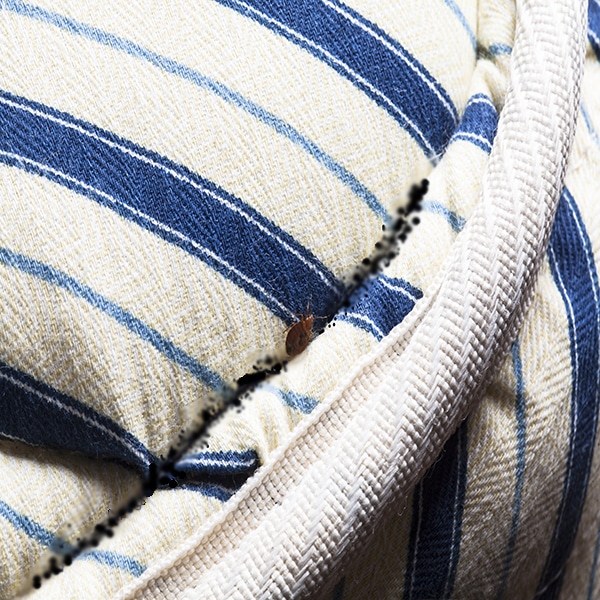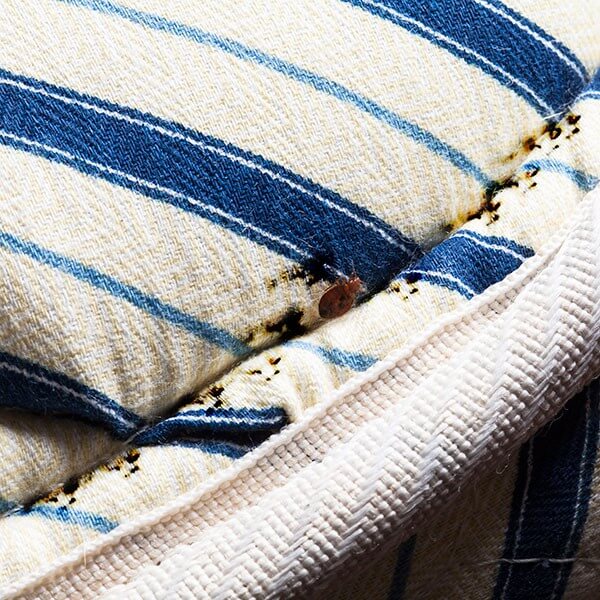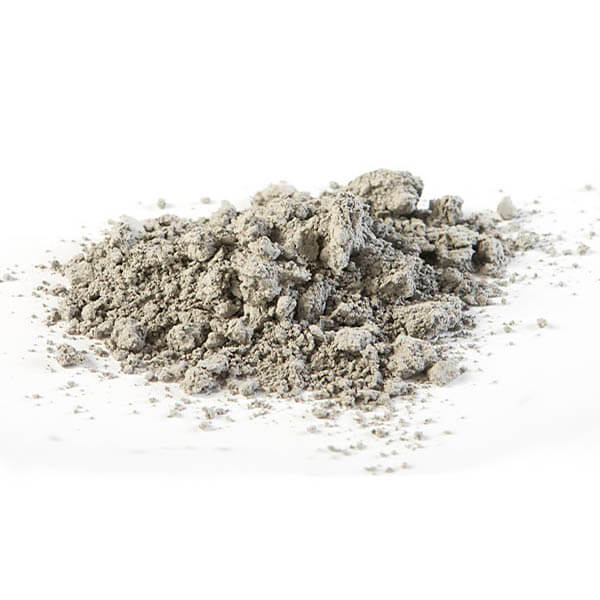
In the article
Something about the night seems to beckon creatures we’d much rather not share our spaces with. Among these unwelcome guests, bed bugs stand out as particularly notorious. Tiny and elusive, they stealthily invade our bedrooms, leaving behind their calling card: bed bug droppings. Importantly, recognizing these minute clues is essential for catching an infestation early and, consequently, saving ourselves a significant amount of itchiness and hassle.
Facing the Itchy Issue: Bed Bug Basics
Merely thinking about bed bugs is enough to make one’s skin crawl. These pests are infamous for their hitchhiking prowess, effortlessly moving from one location to another and making themselves at home in our living spaces. Typically, it’s the bed bug bites—itchy, red welts—that alert us to their presence, turning what should be a restful sleep into a fitful ordeal. However, there’s another, often overlooked yet equally significant sign of their incursion: bed bug droppings.
Understanding Bed Bug Droppings
Bed bug droppings, essentially the pests’ excreted blood, manifest as tiny, dark spots that reveal their hiding places. Appearing granular, these spots are most commonly found in areas where bed bugs feed and lurk, such as on mattresses, sheets, furniture, and even walls. Thus, a careful examination of these areas can expose their presence. Indeed, recognizing these tell-tale marks is the first step in the battle against bed bugs.
Spotting the Difference: Bed Bug Droppings vs. Ordinary Stains
It’s important to note that not every dark spot discovered at home signals the presence of bed bugs. However, there’s a reliable method to differentiate bed bug droppings from other stains: bed bug droppings are usually clustered together and will smear into a reddish-brown streak when wiped with a wet cloth. This distinctive characteristic aids in accurately identifying bed bug presence and prepares us for the necessary actions.

Bed Bugs Droppings on Mattress
The Importance of Early Detection
Discovering bed bug droppings is unsettling, to say the least, but it serves as a vital indicator of an infestation. Although these droppings are not harmful in themselves, they signify that bed bugs are nearby, potentially leading to disrupted sleep and allergic reactions. Moreover, the quantity and distribution of these droppings can offer insight into the extent of the infestation, steering us toward the most effective treatment strategy.
Hunting for Clues: How to Inspect for Bed Bug Droppings
Embarking on a thorough investigation is crucial. Arm yourself with a flashlight and begin with the bed, scrutinizing the mattress seams, bed frame, and adjacent furniture for small, dark clusters. Furthermore, it’s imperative to extend your search beyond the bedroom to other common areas, as bed bugs are known to migrate throughout a home in search of new hiding spots and hosts.
Taking Action: Immediate Steps After Discovering Droppings
Once bed bug droppings are confirmed, it’s paramount to act quickly to curb the infestation. Initiating with a comprehensive vacuuming of the affected areas to remove droppings and any visible bed bugs is a good start. Proceed by washing all bedding and affected garments at high temperatures to eliminate any remaining pests. Additionally, encasing your mattress and pillows with bed bug-proof mattress covers can fortify your defenses against future invasions.
Choosing Your Battle Strategy: DIY vs. Professional Extermination
Addressing a minor infestation may be feasible with DIY methods such as diatomaceous earth, mattress covers, steam cleaning, or deploying bed bug traps. Conversely, for more substantial or stubborn problems, enlisting professional help is advisable. Pest control experts come equipped with potent insecticides and heat treatments, ensuring the complete eradication of bed bugs.

Diatomaceous Earth
Fortifying Your Defenses: Preventing Future Infestations
Adopting a proactive approach is invariably better than seeking a cure, especially concerning bed bugs. Conduct regular inspections of your living spaces, especially after traveling or acquiring second-hand items, to intercept any bed bugs before they settle in. Utilizing bed bug-proof covers can effectively keep these pests at bay, while maintaining a clean, clutter-free environment minimizes potential hiding spots, ensuring your home remains safe and comfortable.
Wrapping Up: Keeping Bed Bugs at Bay
In conclusion, being vigilant for bed bug droppings is not merely a facet of pest control; it’s a proactive measure to safeguard your home and peace of mind. Equipped with the right knowledge and tools, you can deter these diminutive intruders from making your home theirs. Remain vigilant, and bear in mind that the optimal defense against bed bugs is a strong offense, starting with the early detection of those sneaky droppings.
Frequesntly Asked Questions:
- What Do Bedbug Droppings Look Like?
Bedbug droppings appear as small, dark spots or smears, resembling tiny ink blots in black or dark brown color. These semi-liquid droppings are found in mattress seams, bed frames, and furniture creases. When fresh, they smear easily and dry to a slightly crusty texture. They are usually the size of a pinhead. - What Can Be Mistaken for Bed Bug Feces?
Several things can be mistaken for bed bug droppings. Everyday dust, dirt, and small ink stains from pens can look similar. Tiny fabric fibers or lint, and droppings from other insects like cockroaches, can also be confused with bed bug feces. Even dark-colored food crumbs might appear like bed bug droppings but won’t smear like the real thing. - What Are the Tiny Black Specks in My Bed?
Tiny black specks in your bed could be bed bug droppings, especially if you notice other signs of infestation. They might also be flea dirt, which looks similar but turns red when moistened. Other possibilities include fragments from dark fabrics, general dust, or debris, and droppings from other small insects. - How to Confirm Bed Bug Activity
To confirm bed bug activity, inspect your bedding and mattress for additional signs like blood stains, shed skins, or live bugs. Check common hiding spots with a flashlight and magnifying glass for more clarity. Quick action is essential if you find evidence of bed bugs.
Are You Looking for an Easy To Install Eco-Freindly Treatment?



Leave a Reply